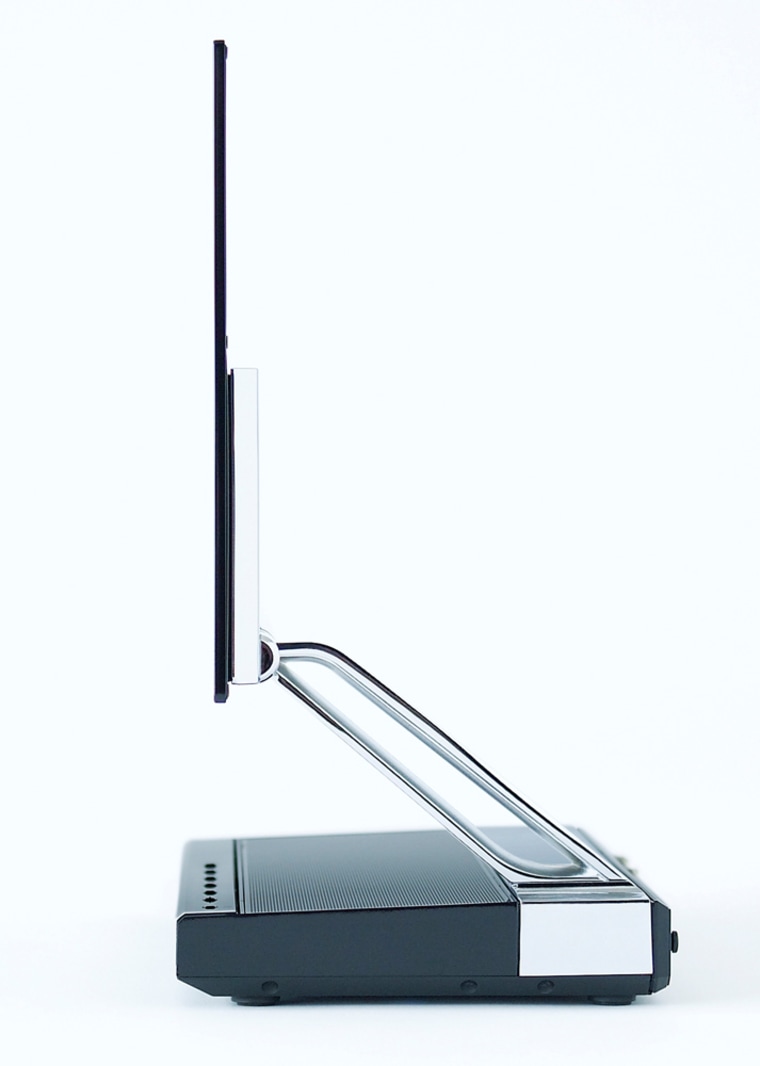Hey, harried parents! As the new year approaches, prepare for a brand-new technology to rock your world. Ready? Here it comes: it’s called the “television.”
Wait — has the TODAY’s gadget guy lost his marbles? Hasn’t black-and-white TV been around since July 1, 1941, and color TV since Jan. 1, 1954? Well, sure. But that doesn’t change the fact that once you read what I have to say below, you’ll agree that soon, TV will never be the same again.
Here’s what’s happening: it’s called “OLED” TV. OLED stands for “organic light-emitting diode.” You pronounce it “oh-ledd.”
Here’s what you will say when you see this Sony OLED TV (there are only 2,000 in the world, most of them in Japan): “Oh, my.”
The picture is stunning. Absolutely amazing. There are no superlatives that can do the thing justice. It’s not TV. It’s a window. Or a looking-glass. The clarity of the image on this new kind of television is difficult to describe, unless you’ve seen one.
Remember, even with existing technology, or any technology for that matter, the test of a truly great picture is tied to an idea called “contrast ratio,” which is just a fancy way to say, “There is a big difference between the lightest and darkest colors.”
As a rule, the greater the contrast ratio, the more vivid a picture looks. Many good plasma TVs out there have a contrast ratio of about 10,000 to 1, meaning the blacks are 10,000 times darker than the whites. With the new Sony XEL-1 OLED TV, the contrast ratio is 1,000,000 to 1. That’s 100 times better. The ratio would actually be higher, but no instruments exist that can measure such a big difference.

Here’s what the TV of the future can do — fit onto a surface that is only 1/10 of an inch deep. That’s a mere 3 millimeters. Today, your so-called “flat-screen” TV is probably almost 6 inches deep (60 times thicker) and weighs over 100 pounds.
This new OLED TV — only available in small quantities in Japan but soon here in the United States — weighs very little, uses tiny amounts of electricity, can be hung like a paper poster on the wall, and soon will be placed on flexible material that can be wrapped around curved surfaces, including your body.
Remember that moment in “Minority Report” when Tom Cruise is walking by curved TV screens that wrap around columns in buildings and hug the flowing contours of the sides of a car? That’s where we're headed.
And again, OLED TV’s picture quality makes plasma, LCD, DLP and virtually any other fancy television look poor by comparison. The quality of the OLED image is literally mesmerizing.
What does this mean to you right now? Well, for one thing, your kids probably haven’t heard of it yet. So as 2008 approaches, let’s pause for a moment to celebrate one of the few times we can say to our children, “What? You haven’t heard of this?” even though it seems to be their business to look at us with exasperated embarrasment every time we try to tell them something new.
Just tell them that the new XEL-1 from Sony costs about 200,000 Japanese yen, or about $1,750, for an 11-inch TV. They’ll be impressed.
What else does this mean to you? It means you can see one soon. I found out about OLED through some of my friends in the high-tech biz, and Sony was nice enough to bring us one —the first in North America — so we could put it on the TODAY show on Jan. 1. Watch for it. It’s amazing.
Finally, if you’re a little curious about the way it works, here you go: An “organic” material (which means it has a carbon atom as its base) sits between two thin sheets of glass, which make up the screen. When electricity is shot through the organic material, the material lights up in millions of colors. That’s it. No light projection, no plasma gas, no light bulbs. The only light and color come from the material itself, when electricity hits it. And since that material can be as narrow as a thread and still be bright, the TV screen can be ultra-thin. And even flexible.
If only I could say that about myself! Have a great new year, and keep those kids in line!
Paul Hochman is the gear and technology editor for the TODAY Show and a “Men’s Journal” magazine contributor. He covered the Olympic Games in Salt Lake City, Athens and Torino, Italy, for TODAY. He was also a three-year letter winner on the Dartmouth ski team and has a black belt in karate.